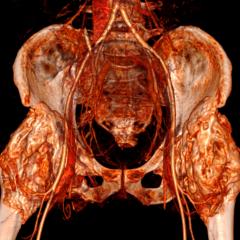Women with undiagnosed endometriosis will have difficulty falling pregnant without IVF, according to a University of Queensland study.
UQ School of Public Health researcher, Dr Katrina Moss, said women whose endometriosis went undiagnosed until after they began fertility treatment ended up doing more cycles, used treatments that aren’t recommended, and were less likely to have a baby.
“By contrast, our study found women who were diagnosed with endometriosis before fertility treatment experienced the same outcomes as those without the condition,” Dr Moss said.
In Australia, 1 in 9 women are diagnosed with endometriosis and 40 per cent of these experience infertility.
Dr Moss said Australian women can wait between 4 and 11 years before being diagnosed with endometriosis, and delayed diagnosis reduced the chances of fertility treatments being successful.
“In our national study of 1322 women, 35 per cent of participants had endometriosis and one-third of those weren’t diagnosed until after they started their fertility treatment,” Dr Moss said.
“Women who were diagnosed late were 4 times more likely to do a lot of cycles, sometime up to 36 cycles of fertility treatment,” she said.
“They were also 33 per cent less likely to report a birth.”
Fertility specialist and UQ Centre for Clinical Research Professor Hayden Homer said early diagnosis of endometriosis and early access to IVF created a level playing field, as the same outcomes were recorded for women who did not have the condition.
“It is highly advantageous to diagnose endometriosis before starting fertility treatment and to adjust the treatment accordingly,” Professor Homer said.
“Otherwise, women are less likely to have a child and face a higher financial and psychological treatment burden.
“It is critical to remain highly vigilant about the possibility of endometriosis amongst women who are thinking about fertility treatment, especially in the presence of severe pelvic pain.”
This study used data from the Australian Longitudinal Study on Women’s Health (ALSWH).
The paper is published in Human Reproduction. DOI:10.1093/humrep/deab216



